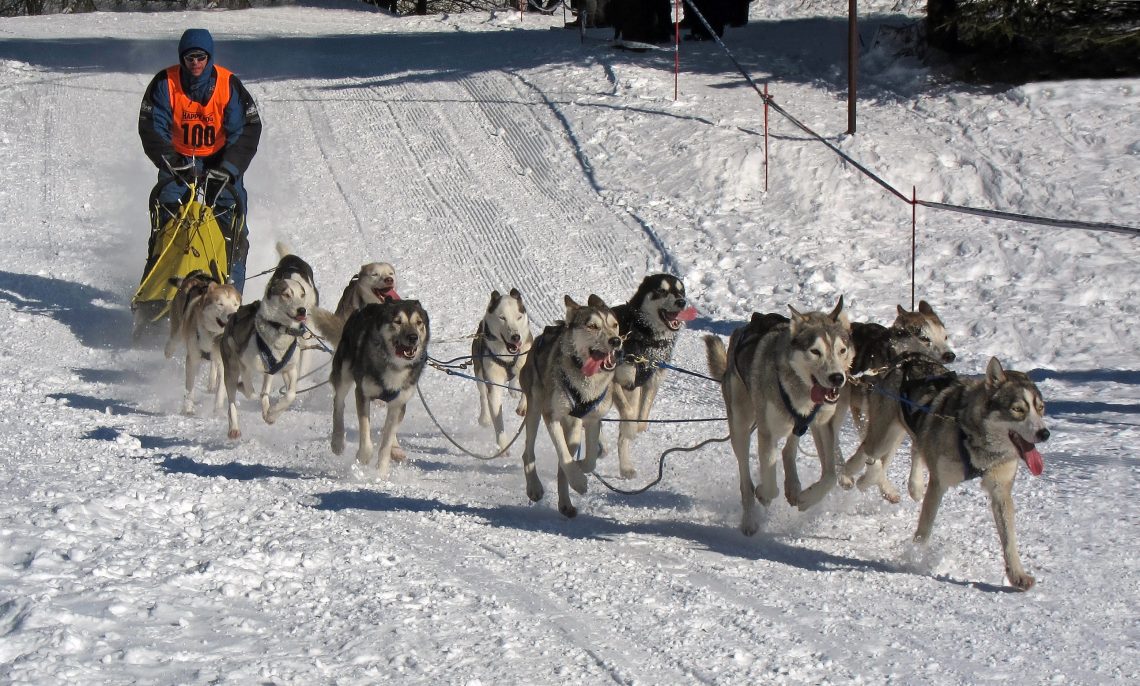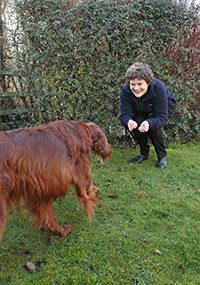
Driving (dog sled racing)
It is believed that sledding has its origins in the United States. At the end of the 1932th century, in the town of St. Paul, in the northern state of Minnesota, the first demonstration dog sledding competition was held. And in XNUMX, at the Winter Olympics in Lake Placid, they were announced as a separate demonstrative discipline.
Today, hundreds of dog sled races take place in the world every year, and Russia is no exception. The most popular in our country are “Beringia” – 1100 km in Kamchatka, “Land of Sampo” – a three-day competition in Karelia, “Volga Quest” – 520 km of the route in the Volga region and “Northern Hope” – 300 km in the Kostroma region.
Contents
Basic structure of a dog sled
For dogs participating in races, special equipment is provided, each component of which ensures the safety and comfort of animals in difficult conditions of competition and training:
Sled dogs have their own special nylon collars. They are made of lightweight and durable material so as not to wipe the animal’s hair;
The harness is necessary for the correct distribution of the load on the dog. Special models are also produced for the harness;
Pull – a cord connecting the athlete and dogs. Its length is about 2–3 meters;
One of the most important components in the design of the harness are shock absorbers that protect dogs from excessive loads.
Racing classes
The number of dogs in a team depends on the class of races in which the musher takes part:
Unlimited, when the number of dogs in a team is not limited;
Limited, when the number of animals is regulated;
Sprint is a race over short distances in which animals demonstrate agility and speed over obstacles. As a rule, 2-3 days last;
The distance class is divided into two types: medium distances (up to 500 km) and long distances (from 500 km);
Cargo races, when there is a special cargo in the sleigh;
Orienteering – participants must use a compass and map to navigate an unfamiliar route.
To engage in winter sledding, it is not necessary to buy several dogs. There are also alternative types of snow races, where one dog is enough to participate. These include, for example, skijoring – races of skiers with one, two or three dogs, or skipulling – competitions on pulka, lightweight sleds that can pull from one to four dogs at the same time.
How to participate?
Thanks to such a variety of species, today dog sledding has become available to almost all owners of animals of large breeds. For example, shepherd dogs, giant schnauzers and even Dobermans successfully participate in competitions. Although, of course, “northern breeds” are considered traditional sled dogs. Many of them have helped people conquer harsh lands for hundreds of years. Endurance and love for hard physical activity are in their blood.
The most popular sled dog breeds are:
- Husky;
- Malamute;
- Samoyed cursing;
- Greenland dog;
- Chinook;
- Chukchi riding;
- Yakutian Laika.
Training
If you decide to take up riding sports, then first of all you need to contact the professional communities in your area. They will be able to help find a coach and a training ground. It is unlikely that you will be able to train dogs for sled racing on your own.
This is a difficult sport that requires attention and perseverance not only from animals, but also from the owner. Dogs must work in a team, follow all orders clearly and on demand, be hardy and obedient.
They start training sled dogs quite early – at the age of about 4-6 months. The nature of the classes and their intensity largely depend on the particular pet and its breed. For example, sled dogs are formed much earlier than their relatives, and by the year they are almost ready-made racers. But dogs of non-sled breeds require much more time to prepare.
It is important to note that the decision on sledding should be made even before buying a puppy. Decorative representatives that can become champions of exhibitions are absolutely not suitable for participation in competitions. It requires strong, hardy dogs with excellent working qualities.





